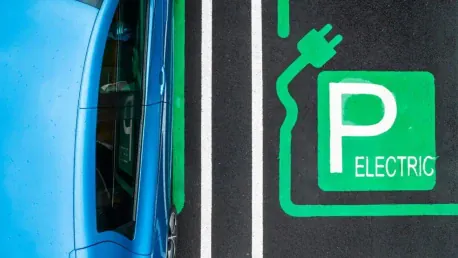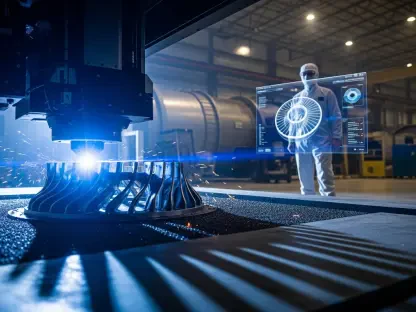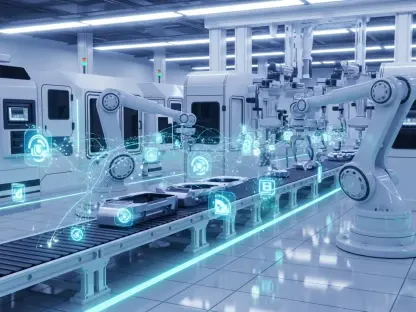A landmark report titled “Get Connected Electric Vehicle Report Q2 2024” by the Alliance for Automotive Innovation presents a detailed state-by-state analysis of the U.S. electric vehicle (EV) market in the second quarter of 2024. This report is a vital resource for understanding trends in EV sales, shifting light-duty market shares by powertrain, and the development of public charging infrastructure. The findings reveal that the adoption of EVs is accelerating across the country, backed by concrete data on sales and market share growth. However, the report also underscores the challenges that come with this rapid expansion, particularly in terms of public charging infrastructure and international competition.
EV Sales and Market Share Growth
Surge in EV Sales in Q2 2024
The growth in EV sales is one of the most compelling narratives emerging from the Q2 2024 report. Electric vehicles accounted for 9.96 percent of new light-duty vehicle sales in the second quarter, showing a notable increase from 9.34 percent in the first quarter of 2024 and 9.05 percent in Q2 2023. This uptick is a testament to the growing acceptance and interest in electric vehicles among American consumers. The rising numbers are reflective of various factors, including consumer awareness of environmental issues, advancements in EV technology, and more competitive pricing options.
The variety of available EV models also contributes to this upward trend. As of Q2 2024, there are 117 EV models on the market, catering to diverse consumer preferences and needs. Interestingly, light truck sales continue to dominate, accounting for 84 percent of the EV market. This surge in light-duty electric trucks highlights a significant shift in consumer behavior as Americans move towards more versatile and utility-focused EVs. State-wise, California remains the frontrunner with a 26.72 percent registration rate, leading a pack of states like Colorado and Washington, with rates of 19.43 percent and 17.87 percent, respectively.
State-by-State Performance
California’s dominant position in EV registrations is not surprising, given its aggressive policies and incentives promoting electric vehicles. The state’s comprehensive approach includes stricter emissions standards, financial incentives for both buyers and manufacturers, and extensive public awareness campaigns. Following California, states like Colorado and Washington are making impressive strides too. Colorado’s 19.43 percent and Washington’s 17.87 percent registration rates reflect proactive state policies and a growing consumer base receptive to EVs.
These trends are significant because they highlight the regional differences within the overall national landscape. While some states lag behind, regions like the West Coast and certain pockets in the Midwest are setting benchmarks. The broader national implications are vital as these states can serve as models for implementing effective policies and incentives to bolster EV adoption. By identifying and replicating successful strategies, lagging states can catch up, ensuring a more uniform growth pattern across the entire country.
Challenges in Public Charging Infrastructure
Disparity in Charging Infrastructure
While the surge in EV sales is promising, the report points out an existing challenge that policymakers and industry stakeholders must address: the glaring disparity between EV registrations and the installation of public charging stations. Publicly available EV chargers grew by only 6 percent from Q1 to Q2 2024, whereas the number of EVs on the road saw an 8 percent increase. This imbalance has resulted in an average ratio of 38 new EVs for every new public charging port. Moreover, the current infrastructure comprises 177,330 public charging outlets servicing 5.1 million EVs, which translates to about 29 vehicles per charging port.
A sustainable future for EVs in the U.S. necessitates a significant overhaul in public charging infrastructure. By 2030, over one million additional public chargers are required to keep pace with the growing number of EVs. This ambitious target demands the installation of approximately 451 chargers daily. Without this critical infrastructure, the U.S. could face a bottleneck situation that might hinder the seamless adoption of electric vehicles, regardless of consumer interest or market availability.
Strategic Investments Needed
Investing in public charging infrastructure is not merely about numbers but also strategic planning. The report suggests that future efforts should focus on both urban and rural areas to make EV adoption feasible nationwide. Urban areas may need more high-capacity fast chargers due to higher population density and vehicle usage, while rural areas can benefit from strategically placed Level 2 chargers to ensure longer travel ranges. Public-private partnerships can play a pivotal role in this initiative, leveraging the strengths and capabilities of both sectors to maximize efficiency and reach.
Furthermore, securing funding and creating incentives for installing public chargers will be crucial. Federal, state, and local governments need to work collaboratively to provide the necessary financial support and regulatory frameworks. Efforts such as tax incentives for businesses that install charging stations and grants for community projects can significantly expedite the process. Such targeted interventions will help meet the growing demand for public chargers, ensuring the infrastructure scales in tandem with EV adoption rates.
Competing on the Global Stage
U.S. Automakers’ Efforts
The report also sheds light on the competitive landscape, particularly the challenge posed by China’s dominance in the global EV market. U.S. automakers and battery manufacturers have committed over $123 billion to more than 80 projects, creating 114,000 jobs across 18 states. These investments signify a robust effort to establish the U.S. as a formidable player in the EV industry. However, despite these significant financial commitments, the report highlights that the competition with China, which benefits from earlier market entry, government subsidies, lower labor costs, and extensive production capacity, remains fierce.
These investments are a step in the right direction, but they require ongoing commitment and support to yield long-term benefits. The focus should be on not only increasing production capacity but also on fostering innovation in battery technology and electric drivetrains. By emphasizing research and development, U.S. automakers can improve the performance and cost-effectiveness of their EV offerings, making them more competitive both domestically and internationally.
Addressing Supply Chain Security
In addition to these investments, another critical factor is securing the EV supply chain. China’s early ventures into the EV sector have allowed it to dominate the supply chain for essential components like batteries and rare earth materials. The U.S. must adopt a strategic approach to diversify its supply chains and reduce dependency on any single foreign source. Encouraging domestic production of key components and building partnerships with allies can help mitigate supply chain vulnerabilities.
Efforts to bolster domestic mining and processing of critical minerals, coupled with investments in recycling technologies for EV batteries, can ensure a stable supply of necessary materials. Additionally, government policies that support these initiatives, such as grants for mining projects or research into alternative materials, will be crucial. By adopting a comprehensive strategy, the U.S. can fortify its position in the global EV market and safeguard against potential disruptions.
Conclusion
The “Get Connected Electric Vehicle Report Q2 2024” by the Alliance for Automotive Innovation offers an in-depth state-by-state overview of the U.S. electric vehicle (EV) market for the second quarter of 2024. This comprehensive report is essential for understanding the latest trends in EV sales, evolving light-duty market shares by powertrain, and the progress in public charging infrastructure. The data shows a significant increase in EV adoption across the nation, supported by robust sales and growing market share. However, the report also highlights several challenges accompanying this rapid growth, particularly in the areas of public charging infrastructure and international competition. The findings emphasize the need for further investment in charging stations to keep pace with the increasing number of EVs on the road. Moreover, the report draws attention to the competitive pressures from global markets, indicating that the U.S. needs to ramp up both innovation and infrastructure to maintain its position in the evolving EV landscape.









